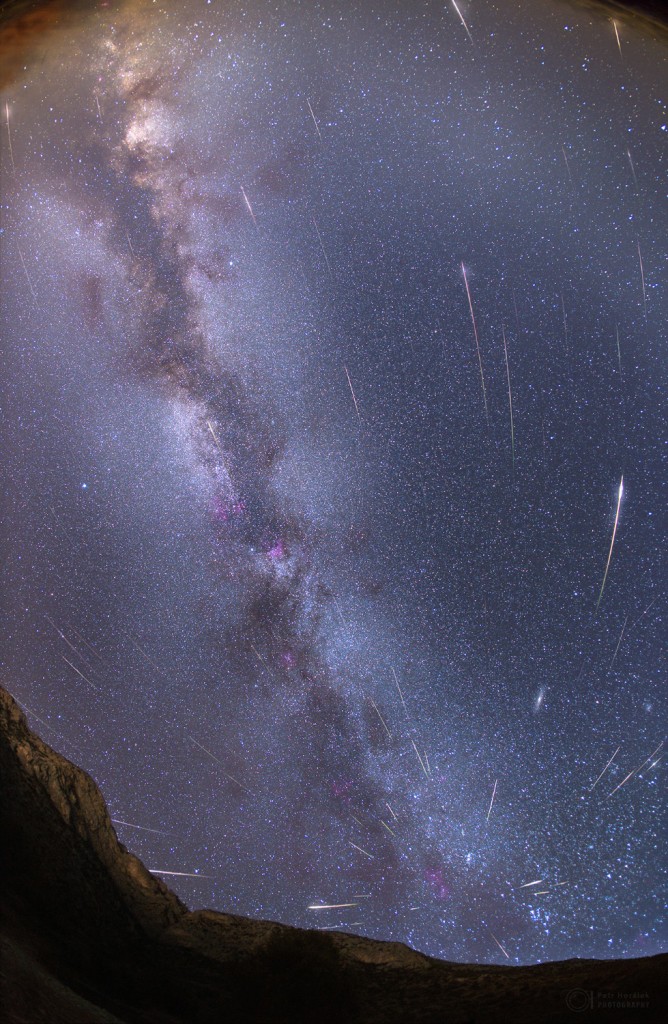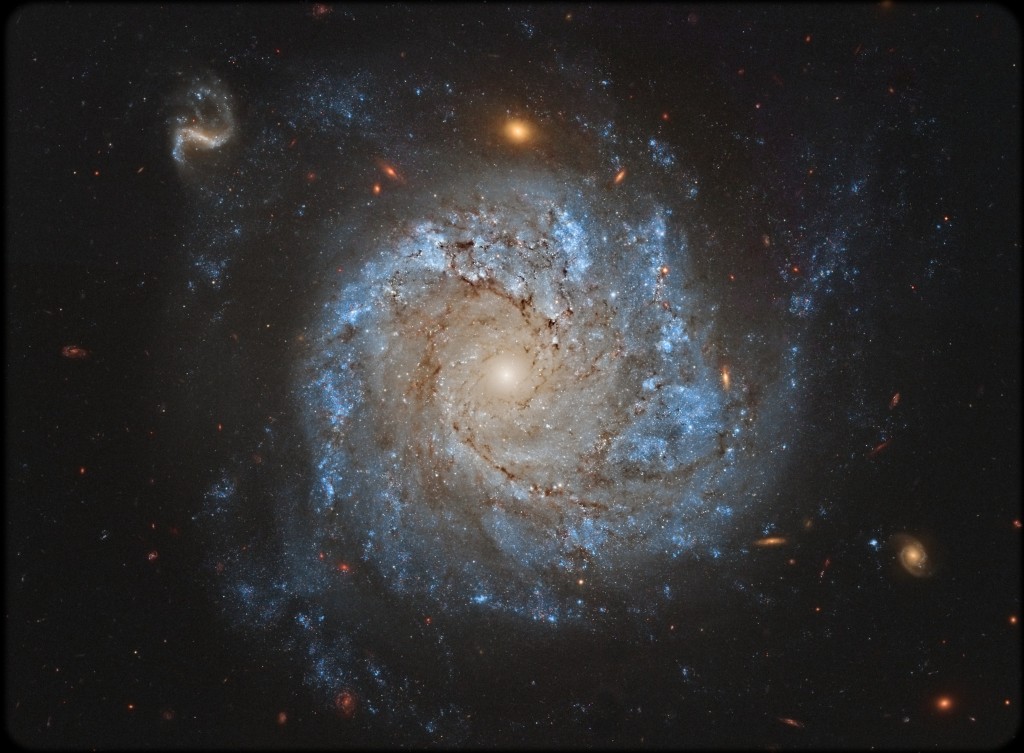Discover the Perseid Meteor Shower and Look Into Deep Space

A fantastic composite image taken from Hvar Island off the Croatian coast during the 2013 Perseid Meteor Shower. The multiple exposure image captures 67 meteors and a view of the Milky Way. Photo by Petr Horalek, courtesy NASA.
If you look up at the night sky on a clear night you will see streaming out of the darkness light that has taken millions, even billions of years to reach you. The farthest known galaxy is 13.2 billion light years away. Most of the universe, in fact, cannot be seen with the naked eye. Of the 300 sextillion stars astronomers estimate that comprise the universe, we can only see about 3,000 of them from the earth’s surface. Our knowledge of the vast universe is extremely limited.
We now are only a week away from the peak of the annual summertime display of shooting stars known as the Perseid meteor shower, an event we can all see and marvel at. And if viewing conditions are favorable, there is a good chance that this year’s performance could turn out to be better than average, thanks to a gravitational boost by the planet Jupiter.
But this year, observers already had begun to see members of the Perseid meteor stream unusually early in July, as the shower’s forerunners do not usually begin to make their appearance until the third week of July. While meteors appear on the order of only a few per hour at present, their numbers will begin to ramp up in earnest after August 7th, reaching their maximum during the predawn hours on Friday, August 12th.
The moon will be just past first-quarter phase and will interfere slightly with meteor viewing by lighting up the sky before midnight, but it will set at around 1 a.m. on the morning of August 12, leaving the sky dark for about 3 1/2 hours before the first light of dawn begins to break in the east.
The meteors appear to radiate from the constellation of Perseus — hence the name Perseid. Perseus begins to rise out of the northeast around 9 p.m., and by 4 a.m. it has climbed high in the sky, almost to a point that’s directly overhead.
The meteors are the dross of the Swift-Tuttle comet, which was discovered in July 1862 and reappeared in the fall of 1992, and was visible with binoculars from earth-bound viewers. Due to appear again in 2126, Swift-Tuttle then is expected to be a bright comet visible from earth even without viewing aids. The comet has probably circled the sun dozens of times and has left a “river of rubble” in its wake. The earth’s orbit passes by this rubble river every year in mid-August, creating the annual display of shooting stars.

This photo, "The Spiral Galaxy and Friends," was NASA's July 14th Astronomy Picture of the Day. The photo of the 100-million light-years distant galaxy was reprocessed from a Hubble Space Telescope view. Photo courtesy NASA. We'll use an earth-bound telescope to look for distant galaxies during Clifftop's Starry Nights field trip.
The average Perseid meteor, just visible to the naked eye, is scarcely larger than a grain of sand. It is invisible until, upon entering our atmosphere at speeds of up to 37 miles per second — over 133,000 miles per hour — its kinetic energy is used up in such processes as the production of light, heat and ionization. Thus, such a small particle can be seen for a few hundred miles as a bright streak of light in the sky. So what we are seeing is the light energy it develops, not the particle itself. The majority of Perseid meteors become visible at about 70 miles above the ground and die out at a height of about 54 miles.
This year should be better than average because of Jupiter’s alignment with both the earth and the Perseid stream. Before intersecting earth, the tiny Perseid particles will have passed close enough to the biggest planet in our solar system to be shifted closer to the earth’s orbit. While a single observer might see as many as 60 to 90 meteors per hour during a normal Perseid shower, thanks to this gravitational boost from Jupiter, the meteor rate this year may be noticeably higher.
It should be stressed that for best results, observations should be made far from cities where smoke, haze — and bright lights especially — will shut out all but the brightest meteors. City dwellers will be able to see Perseids, but at a much reduced rate. The darker the sky and the fewer the obstructions (such as nearby buildings or tall trees), the more meteors you will see.
If you are interested in viewing the shower, and learning more about the stars in the sky, Clifftop is hosting a nighttime outing at the Paul Wightman Subterranean Nature Preserve on Saturday, August 13th, from 8 to 11 PM. The event is free and open to the public, but you have to pre-register in case we have to cancel for weather. Pre-register by August 10th at clifftop@htc.net or 618-458-4674.
CLIFFTOP, a local nonprofit organization, is focused on preserving and protecting area bluff lands.
A version of this article appeared in the 5 August 2016 edition of the Monroe County Independent.
© 2016 all content rights reserved Clifftop NFP
Comments are currently closed.
